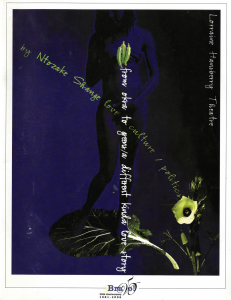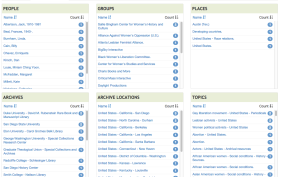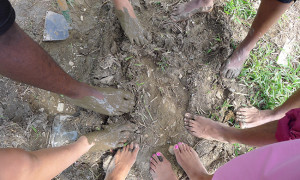Curating: What legitimizes it?
During our visit with Ntozake Shange, I asked her if there was a period in her career as writer, where she felt as though she could not write, completely frozen, and if so, how did she overcome this? Shange continuously spoke and speaks about the importance of integrating movement and language as she states, “You have to ready your body for language” as language moves and has the capability of moving. Language and movement are not separate entities. In her response, Shange mentions the importance of sporadic writing, even if it begins with writing a grocery list, as it is possible to and usually develops into something else. Language works as a tool for personal and communal reflection. Through writing, language-though there is no certainty she takes this approach to all her work because she shared her disciplined writing schedules- there is intentionality behind Shange’s writing. Shange’s writing documents and vocalizes some of the experiences of black womanhood and black girlhood.
Archiving materials indicate that a decision about the worth and the necessity of its preservation-whether this decision is made by the creator of the work- has been made, which validates its importance. From the discussion with Shannon on what is considered an archive and the formality of archives, there is confrontation as well as flexibility on the definition and the methods of curating. In “An Open Letter to Everyone Using the Word Curate Incorrectly” Mel Buchanan expresses a strong opposition to the casual or liberal usage of the word “curate” to describe their modes and practices of documenting information without formal training. As Buchanan states “ Curating, by its very definition, is done carefully. Care is implied. MAKING A LIST IS NOT CURATING. Nor is it is filling your bookshelves with color-coded paperbacks and animal bones and jars of feathers you found at a thrift store”, which implies that Buchanan believes the formality of its training validates and legitimizes a “curator”. However, I would like to challenge the sentiment that there is one structured way of creating histories and recording memories. Changes in methods of communication impact the creation and production of information. The implementation of intergenerational techniques as the digital era evolves. Redefining and reimagining traditional and hegemonic modes of cultivating, sharing knowledge and archival practices enables the individual to be in control of their content, which encourages Shange’s notions of self-determination.









